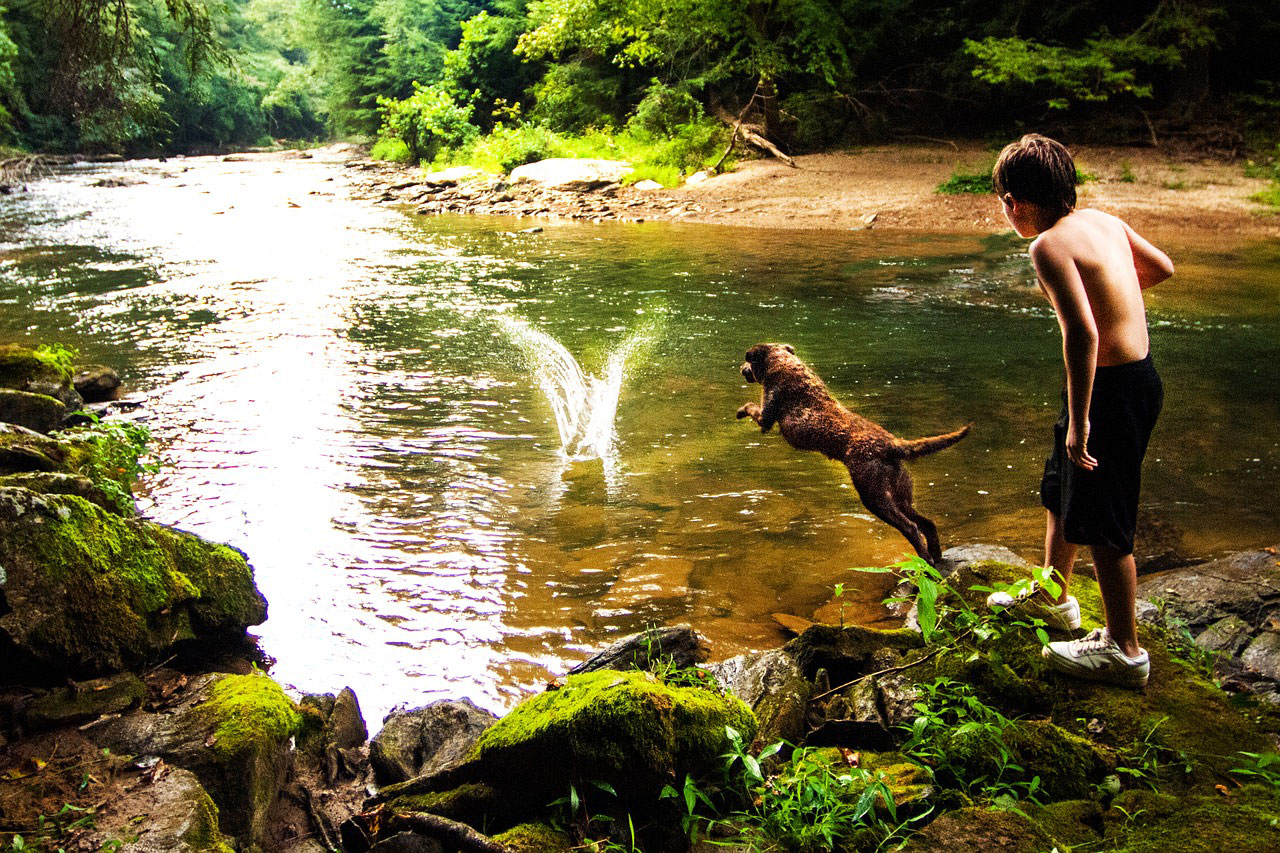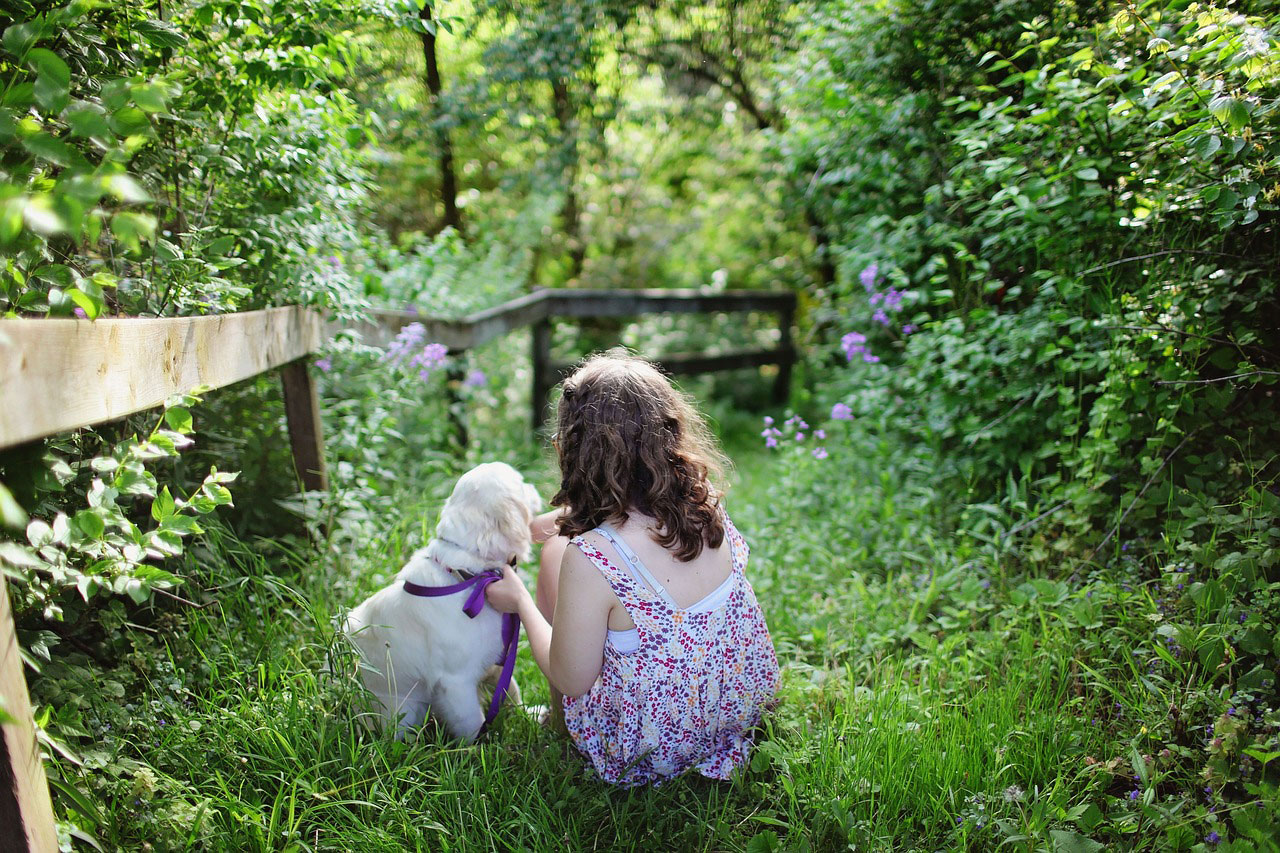
What Having a Dog Can Do for a Kid
If you were lucky enough to grow up with a dog, your childhood is probably filled with memories with that faithful companion: days playing in your yard, going to the lake, and walking your pet through the neighborhood. Kids and dogs often appear to be a natural match, and the two are frequently enthusiastic about each other from the very beginning.
But having a dog is more than just a fun experience for a kid. Dogs change children’s lives in many ways, and we don’t always readily recognize the benefits that these animals provide. You may view your dog as another family member, but to your child he could be an exercise partner, a teacher, a therapist, and so much more.
Health Benefits of Having a Dog
One of the best reasons to have a family dog is the health benefits that it can offer to your kids. The American Heart Association found that owning a dog offers valuable cardiovascular benefits and likely results in a reduced risk of heart disease. With dogs in the home, kids have a reason to go outside and get exercise with their pet on a daily basis. This regular exercise is great for a child’s health, but the bonds they form with their pets also lower their heart rate and reduce their reactions to stress.
The reduced heart rate and lower stress levels can be helpful for combating high blood pressure. While you might not be immediately concerned about your child developing high blood pressure, this condition affects younger people more often than you might think. In 2015, 10% of men ages 18 to 39 experienced high blood pressure. Around 5% of women in that same age group also had high blood pressure. Stress and lack of physical activity are two contributing factors, and having a pup can help children to avoid those issues and set up .
A dog can even have a positive effect on your child’s immune system. For example, we can actually make ourselves too clean, which leaves our bodies vulnerable to bacteria. Dogs can help us to develop healthy bacteria colonies in our bodies so that our immune systems are better able to fight infections. Exposing your children to pets can boost their immune systems and leave them better prepared to fight off bacterial threats.
If you’re looking to leverage the health benefits of having a dog in the family, be mindful when choosing which pup to bring home. Certain breeds, such as beagles and Labrador retrievers, are ideal for active families and can keep pace with a bunch of high-energy kids.
Dogs and Responsibility
When adding a dog to your family, you’ll need to talk to your children about responsibility. Caring for a puppy teaches children how to be responsible for another living being. Depending on your child’s age, you might assign tasks like walking, cleaning up after, or feeding the dog. When your kids go back to school after the summer, continuing to care for the pup even after doing homework and activities can help them to learn the importance of long-term family commitments.
This is also an ideal time to teach your children about canine body language and how to stay safe around dogs that they don’t know. Highlight the importance of never approaching a strange dog and always asking for permission before petting them. Teach your children about how dogs communicate. Teach them to look for signs that a dog is uncomfortable, like tense facial muscles, a tucked tail, and a body that’s lowered or crouched toward the ground. These skills will help your child learn to interact appropriately in a variety of different social situations involving dogs. They may even prove to be helpful in future careers, such as postal work.
Your new pet will also come with financial costs, and you can use this as an opportunity to teach your kids the basics about budgeting and managing money. Highlight some of the different costs associated with your new pup and talk about how you saved up the money to be able to afford the pet. Setting aside a fund for emergency veterinary expenses is always a good idea, and you can talk to your children about how and why you’re putting away money in a savings account.
Emotional Effects of Dogs
Dogs also offer countless emotional benefits to kids. A dog can help your child to connect to nature, which is particularly important in today’s age of screens and tech devices. Connecting with nature can enhance a child’s creativity, increase their social interaction, and boost their mood.
A dog also offers comfort to children. They can help kids deal with disappointments and loneliness, and they can offer reassurance when your child is scared or nervous. Dogs can be a source of social support and may help a shy child engage with other kids. These are just a few reasons why pet owners experience lower rates of depression than people who do not have pets in the home.
Having a pet will also teach your children important lessons about self-restraint and kindness. Young children can learn the right way to pet a dog, and older children can learn how to be considerate in how they act, such as by not screaming and running through the house because it startles their dog. Kids who have dogs can learn how important emotional control is, and they can learn how to engage kindly with another living being.
Lastly, dogs teach kids important lessons about unconditional love and companionship. The support of a dog can help kids get through tough times and navigate the challenges of growing up. If you’re considering adding a pet to your home, know that doing so could help your kids in many different ways.










